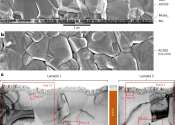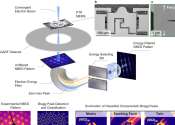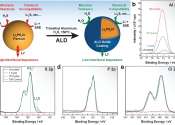Scientists develop bifunctional catalyst performance enhancement technology to lower the cost of hydrogen production
Researchers have developed a methodology to improve the reversibility and durability of electrodes using bifunctional platinum-nickel alloy catalysts with an octahedral structure that exhibits both oxygen reduction and generation ...
Mar 18, 2024
0
10









